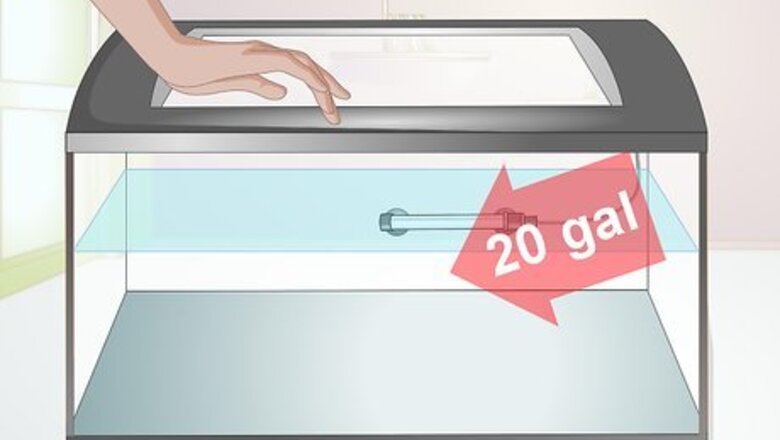
views
Preparing the Aquarium for Breeding
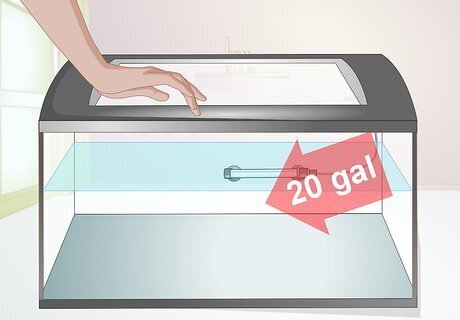
Select the breeding aquarium. Buy a semi-large fish tank, at least 20 gallons (75.7 L). A 30-gallon tank is ideal for one pair of breeding convicts. If you have the space, a 40-gallon breeder tank is ideal, especially if you’re planning to breed more than one pair of convict cichlids. Make sure that you don’t exceed more than one breeding pair per 20 gallons (75.7 L) of water. This will help to prevent aggression between breeding pairs of fish.

Set up the nursery aquarium. You may want to consider setting up a separate smaller tank to put the fry in once they’ve begun to mature, in order to protect them from getting eaten by their parents. This tank can be between 5 to 10 gallons (18.9 to 37.9 L) in capacity. Use a sponge filter and an aquarium heater in this nursery tank.

Check your tank for proper filtration. New baby fish (also known as fry) are going to constantly be born in your tank, so the bio-load on your aquarium will begin to be strained. Bio-load is a term which refers to the accumulated waste produced by your fish, which places demand on your aquarium’s filtration system. You’ll need a power filter which has the capacity to filter at least double the volume of your tank. If you have a 30-gallon tank, choose a filter that can clean at least 60 gallons (230 L) per hour.
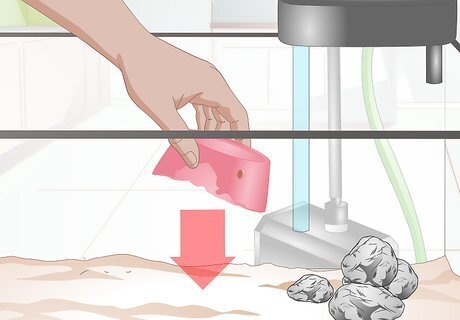
Decorate your tank. Because convict cichlids can be a naturally aggressive fish, you will want to provide plenty of hiding places in your tank. Add some flat stones and a cave (or flowerpot) or two to the tank. The convicts will lay their eggs on the flat stones, and the caves will provide shelter to the fry once they are born.

Add some resilient plants to your tank. You may choose to add some hardier plants such as the java fern or Amazonian sword plant to the tank to add some decoration and make the fish feel more at home in their environment. Most other plants will be uprooted or destroyed by the convicts. Adding plants to your aquarium will also improve the oxygen content of your tank and remove the carbon dioxide and nitrogen that your fish generate. This helps to make your tank a healthier environment for your convicts, and helps to reduce the strain on your filtration system.
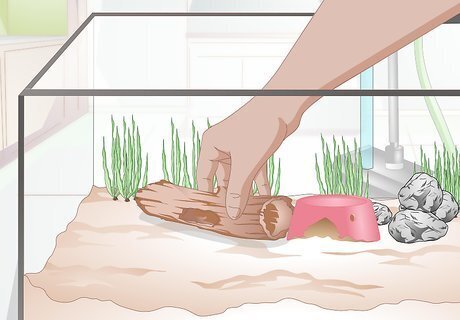
Enhance your aquarium with some driftwood. Driftwood makes a great addition to your aquarium setup. It provides shelter to your convicts as well as blocks the line of sight from one end of the aquarium to the other, which may help prevent your fish from fighting and injuring each other. Driftwood also adds some visual interest to your tank, and is much healthier for your fish as well as more aesthetically pleasing than plastic aquarium decorations.
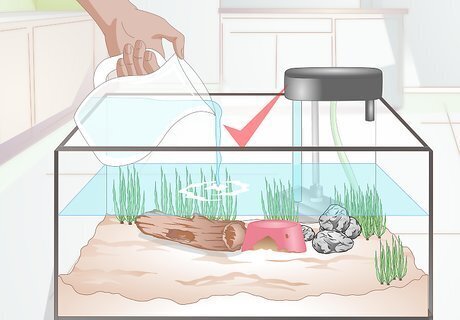
Give your fish clean water. Breeding convict cichlids require clean water conditions to ensure a healthy living and breeding environment, and to reduce stress. Change out 20-25% of the water in the tank once every 3 days.
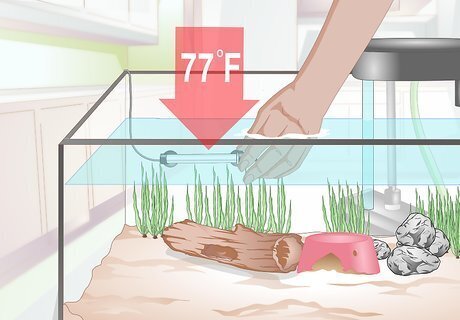
Raise the water temperature in your tank. To promote breeding, increase the water temperature in your tank to between 75-79 degrees. Be careful not to raise the temperature in your aquarium to more than 82 degrees; the high temperature will pose a danger to your fish. Most aquarium heaters can be set for a specific temperature. You may want to get a stick-on thermometer as well, which will allow you to quickly check the water temperature whenever you glance at your aquarium.
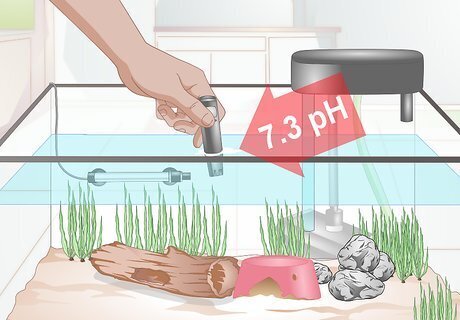
Check the pH level. The pH in your aquarium should be between 6.5 and 8.0. Although convict cichlids are hardy fish, and can survive a wide range of pH conditions, keeping a stable pH in this range is ideal for reproduction purposes. Test your aquarium's pH level with easy to use paper test strips which can be bought at any pet store. To use the strips, simply dip them in your aquarium water, and compare the resulting color to a provided chart.
Breeding Your Convict Cichlids
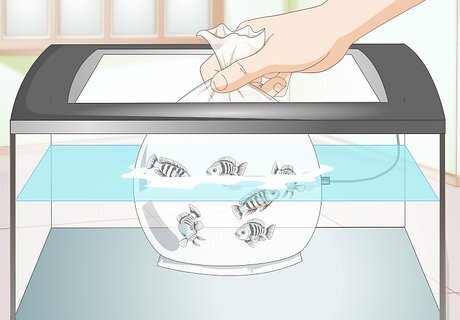
Select your breeding fish. It’s best to start with 6 convicts, in order to allow the pairing to occur naturally. You can tell if a convict is female by the bright yellow-orange coloring on their belly and spots on their dorsal fin. The color patches become more pronounced just before egg-laying. Males don't have the same bright coloring, but are larger, and have a steeper forehead and longer, more pointed fins than the female. Due to their aggressive temperament it is not recommended that you keep convict cichlids in the same tank with any other breed of fish. There are several color variants to consider when choosing your fish. The regular black and white convict cichlids are the easiest to breed, but an albino variant known as the ivory cichlid and a pink variant are beautiful options as well.
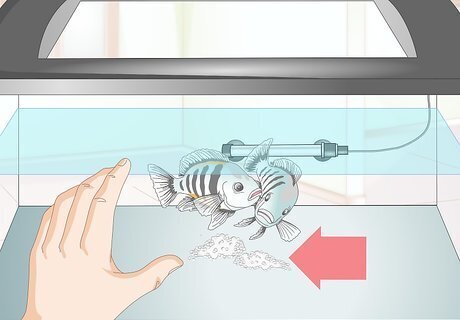
Let nature take its course. The female convict will take the initiative in the mating cycle. After choosing a dark hiding place, the female courts the male, then lays her eggs on the flat rocks or on the side of a flower pot. Once laid, the eggs will be carefully guarded by their parents. This is when convicts display their most aggressive behavior.

Watch and wait for the eggs to hatch. The eggs, which average around 100 -200 per brood, will hatch after about 3 days. It will take another few days before the fry start swimming around the tank under the protection of their parents. The parent fish will try to keep the fry in place for 10 to 14 days, after which time they may be ready to breed again. At this time, you may want to consider moving the fry to their own nursery tank, as the parents will sometimes eat the first batch of fry to make room for the new eggs.
Taking Care of the Convict Fry
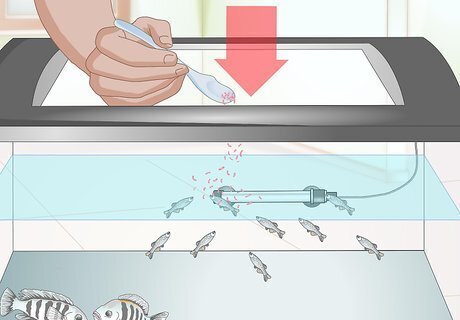
Wait a few days after the fry hatch before you feed them. For the first 5-7 days after they hatch, the fry can subsist entirely on what is left of the yolk sac. Feeding them during this time will only contaminate the water quality in your tank because the food will remain in the tank uneaten.
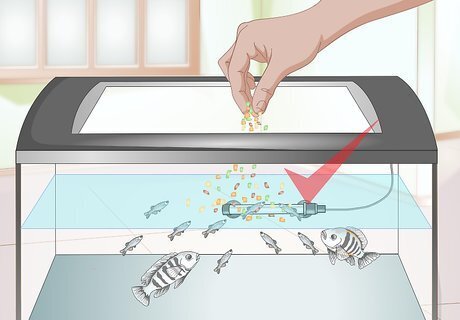
Slowly introduce new foods to the fry. They can eat brine shrimp nauplii for the first few weeks, then switch to crushed up flake food or special fry food. They will also eat blood and tubifex worms when they get a few days older.
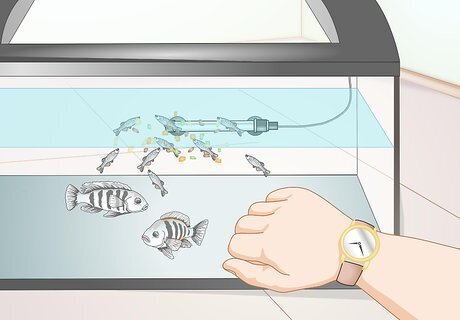
Set a feeding schedule. Make sure that you feed your fish at least a couple of times a day. Due to their aggressive nature, hungry convict cichlids may try to eat each other if they miss a meal.

Remove the fry from the tank once they are mature. This is so that once the parent fish are ready to breed again, the fry won’t be in danger of being eaten to make room for the new babies. This can happen after 10-14 days, so make sure to watch for signs of aggression from the parent fish, which may signal that they are preparing to breed again.














Comments
0 comment